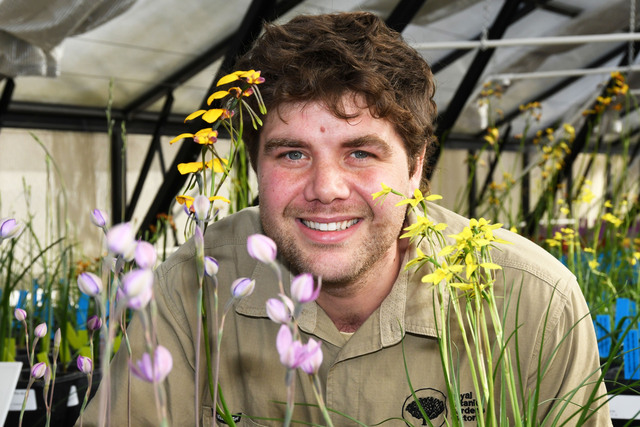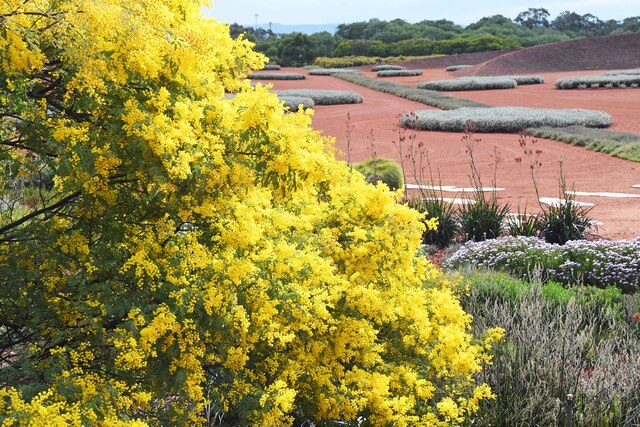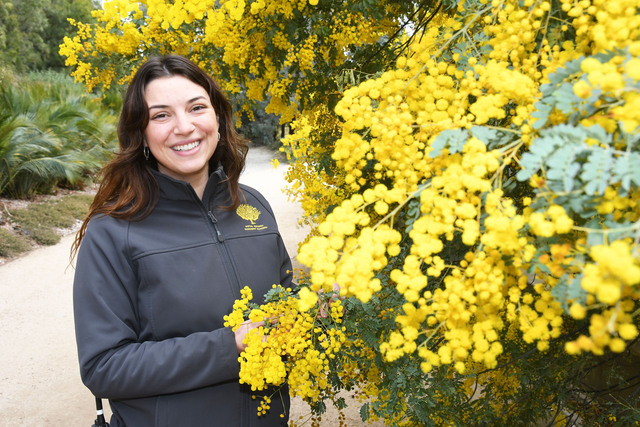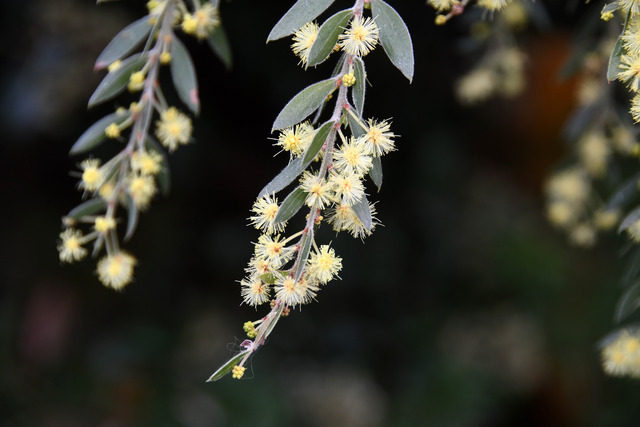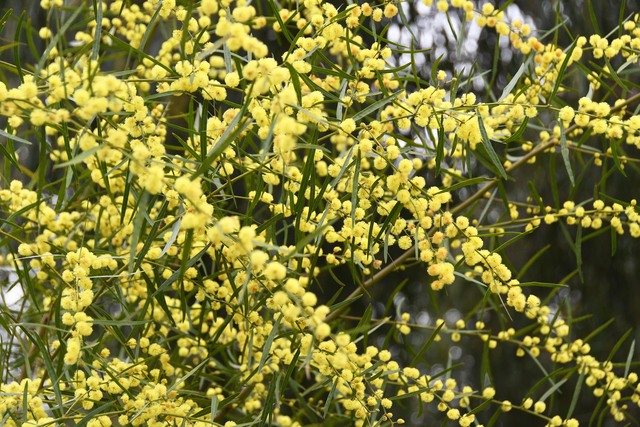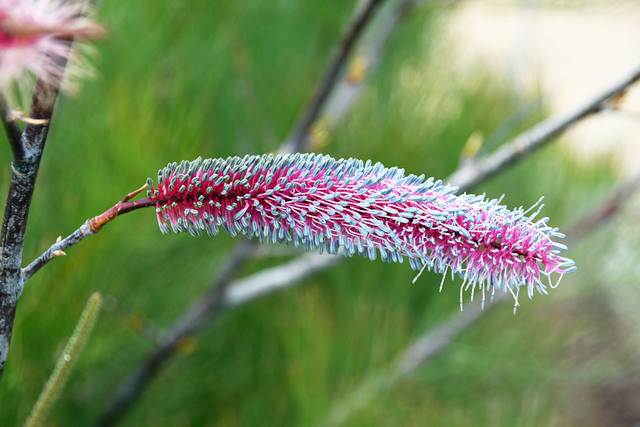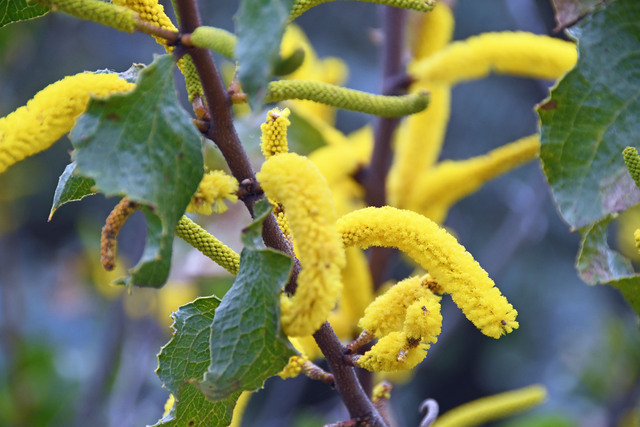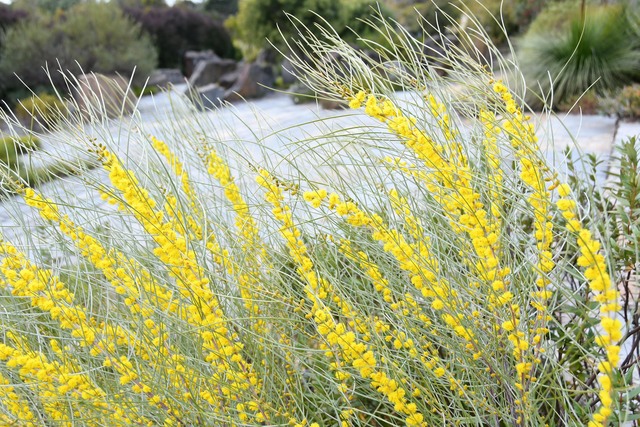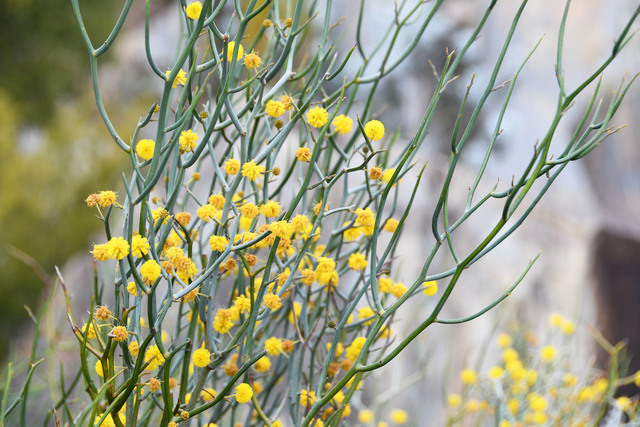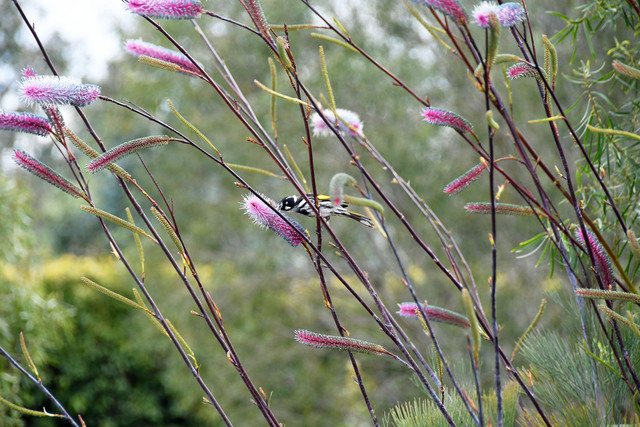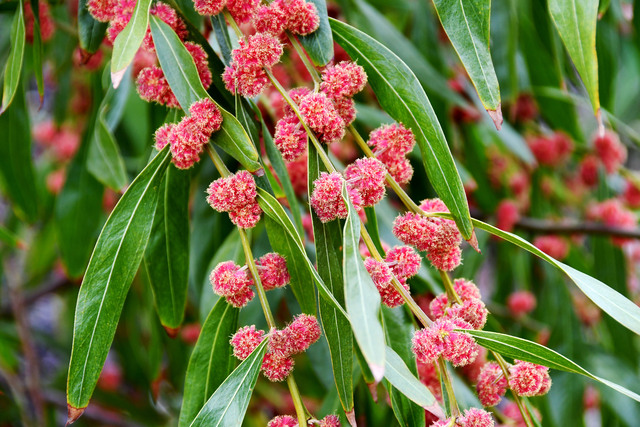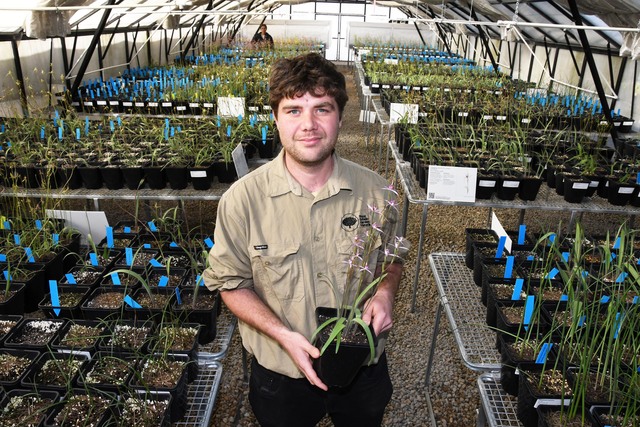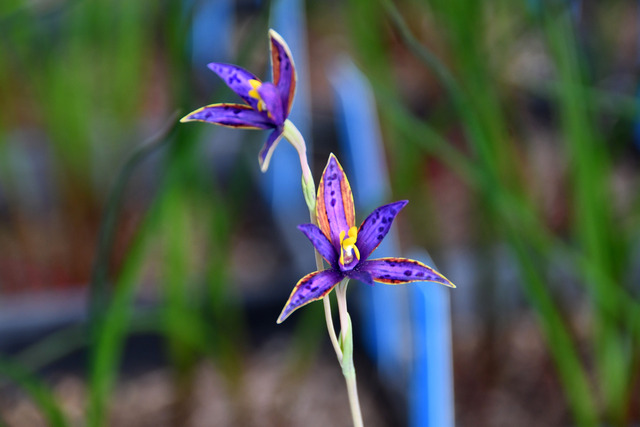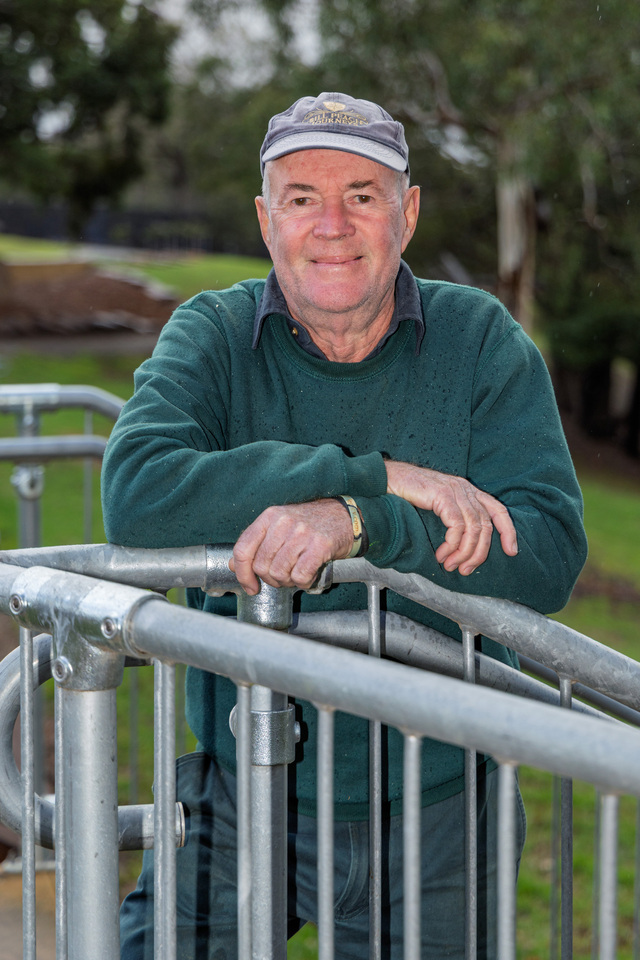Royal Botanic Gardens Cranbourne is putting on a spectacular show this spring, with wattles and orchids bursting into bloom.
“We have approximately 87 species of wattle growing at Royal Botanic Gardens Melbourne and 92 species on display at Royal Botanic Gardens Cranbourne,” Tim Sansom, executive director Living Collections and Environment at Royal Botanic Gardens Victoria, said.
“We have several must-see, unique and rare varieties, including Acacia leprosa ‘Scarlet Blaze’.”
This unusual cultivar was found in 1995 deep in the Black Range State Park.
Like virtually all species of wattle, Acacia leprosa usually flowers in yellow, so when bushwalkers stumbled upon a bright red specimen, they took cuttings and passed them on to Royal Botanic Gardens Victoria.
There, botanists worked with the nursery team to conserve the spectacular cultivar by propagating new plants from the original cuttings.
As a result, Acacia leprosa ‘Scarlet Blaze’ was born.
To this day, all ‘Scarlet Blaze’ plants are clones that descend from the cuttings propagated at the Melbourne Gardens nursery.
There are approximately 1,100 known species of Acacia, but the vast majority occur naturally in Australia, with Acacia pycnantha (Golden Wattle) officially proclaimed the national floral emblem in 1988.
For more than 25 million years, wattles have grown on the Australian continent. They have adapted to Australia’s extreme environments, and many species have evolved resistance to fire, salinity, drought, alkalinity and disease.
“This genus has evolved various shapes and textures, sizes, bark and leaf forms due to the environments that they are adapted to. They can range from tall trees to small shrubs and are fascinating to explore,” Mr Sansom said.
Some highlights include: a unique red cultivar called Acacia leprosa ‘Scarlet Blaze’, Acacia denticulosa (Sandpaper Wattle), which is nicknamed the ‘twisties’ wattle due to its flowers’ resemblance to the snack, Acacia aphylla (Leafless Rock Wattle), a Western Australian species that evolved without leaves due to environmental selection pressures; and Acacia cultriformis (Knife-leaf Wattle), which has been grafted to look as though it is growing upside down.
The science team at Royal Botanic Gardens Victoria was also part of the team that recently sequenced the genome of Acacia pycnantha (Golden Wattle), which will help support conservation of the rarer species in the genus.
This spring, the Cranbourne garden also unveils the Orchid Conservation Tour, offering visitors a behind-the-scenes glimpse into the world’s largest endangered orchid rewilding effort.
Running from 2 to 18 September, the tour invites nature enthusiasts into the shadehouses of the RBGV Orchid Conservation Program, where Victoria’s precious native orchids, many of which are found nowhere else on Earth, are being carefully nurtured and reintroduced into the wild.
Orchids are among the state’s most enigmatic wildflowers, with over 400 native species gracing Victoria’s landscapes, but half are threatened with extinction in the wild.

